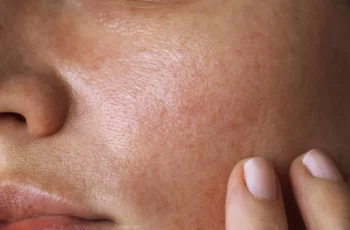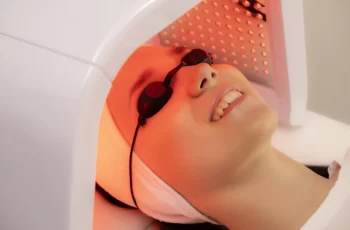
At what stage of your skincare routine should you use nose strips?
The interesting thing about nose strips is that they are one of the most popular skincare products, but opinions still vary among beauty experts and fans.
Some people love them and get a perfect complexion with them, while others avoid them like the plague. As far as I can tell, how nose strips work, who they are for, and when you should use them remain a mystery to many of us, no matter how long they have been sitting on the beauty shelves.
So today I did some research and with any luck I will have the answers for you – so let’s get started and learn more about at what stage of your skincare routine should you use nose strips.
Should you wash your face before or after nose strips?
Yes, you need to wash your face before and sometimes after using nose strips. When you apply nose strips or pore strips to your skin, you must make sure that your skin is clean. This is important because the surface of your skin can carry a range of impurities, such as pollutants, dirt, bacteria, and excess sebum. When you apply a product to dirty skin, all that dirt gets stuck in it and can get pushed deep into your pores, which can cause inflammation or various breakouts, such as blackheads and spots.
You also need to make sure your skin is moisturized when applying nose strips, so after cleansing your face is the best time! Whether you need to wash your skin after using nose strips depends on the specific instructions of the product you are using. In most cases, you will find that various facial acids are mixed into the formula, such as powerful salicylic acid and glycolic acid, and washing them off can prevent your skin from becoming too dry, tight, and irritated.
What to put on your face after nose strips?
Your skin will feel sensitive after removing the nose strips. Therefore, it is best to avoid products with high levels of AHA and BHA, as this can be too much for the skin and cause a range of problems, from redness to rashes. However, this does not mean that you can’t apply something to your skin that will keep it clear. It is best to choose ingredients that are non-comedogenic, i.e., will not clog your pores. Moisturizing skin products such as hyaluronic acid can help hydrate the skin and brighten the complexion, especially after using nose strips or pore strips, as it can remove any buildup barriers that prevent the nourishing ingredients from absorbing, allowing you to see results faster.
How to prep your skin for pore strips?
For oily skin, it’s best to cleanse your skin before using a non-foaming, gel-like formula (foam will strip away all the essential oils your skin needs to stay healthy and comfortable). If you have dry skin, you should consult a dermatologist or skin specialist before considering using nose strips to determine if your skin can tolerate their use. While these products are effective for oily and acne-prone skin types, they may be too harsh for those with dry and sensitive skin types.
Top tips for prepping your skin for pore strips:
Cleanse your skin with products that are appropriate for your skin type.
Avoid using foaming products or harsh ingredients, as these may irritate the skin and cause it to dry out.
Apply the nose strip to damp skin to help it better conform to the curve of your nose and other facial features.
Never apply the nose strip to uncleaned skin.
It really depends on your skin type, as the amount of ingredients should be carefully chosen to ensure that it doesn’t overstress your skin and cause an adverse reaction.
Should you use a moisturizer after nose strips?
Yes, absolutely. As I mentioned before, make sure to use ingredients that won’t clog your pores. Shea butter is very nourishing for very dry skin, but it is known to clog pores and cause blackheads and acne from product buildup. However, you shouldn’t leave your skin without product after using a nose strip. Instead, opt for a lightweight serum with moisturizing ingredients like hyaluronic acid and niacinamide to draw moisture around your skin and apply around your face to store moisture in your skin. This helps combat the dryness that can occur after using a pore strip.
When you remove a nose strip, you briefly disrupt the skin’s protective barrier by quickly removing blackheads, bacteria, and other pollutants. By restoring your skin’s balance with a hydrating serum and moisturizer, you can fill in the gaps in the barrier so it can function properly again and protect against free radical damage, such as: B. UV radiation, environmental pollution, and other environmental influences. Stress.
What happens if you leave a nose strip on your skin for too long?
If you leave a nose strip on your skin for too long, you’ll find that when you try to remove it, you end up with more than you bargained for. I mean, you’re not only removing blackheads, you’re also removing the top layer of skin! When you remove too much skin from the outer surface of your face, you open your face up to all kinds of skin damage, from increased sun sensitivity to bacteria to other skin-aging factors.
You will notice that your skin feels tight, appears bright red, and may be sore to the touch. Therefore, it is important to follow the instructions on the product packaging carefully. If you have any concerns about using nose strips (regardless of size), you should consult your doctor or healthcare professional for additional reassurance.
I hope these are the answers you were looking for today. If you have questions or just want to discuss skincare, don’t forget to find me on our Instagram! Our DMs are always open to other skincare enthusiasts!


